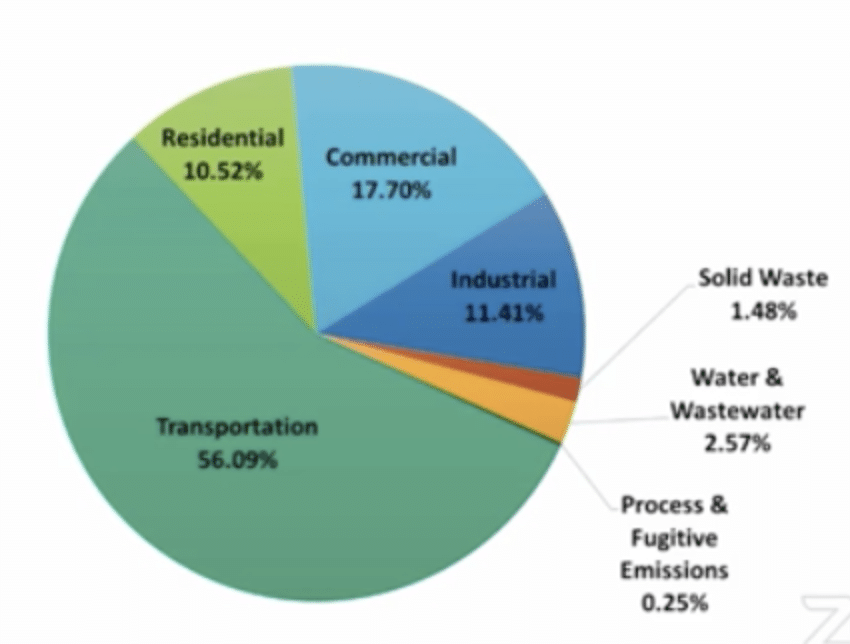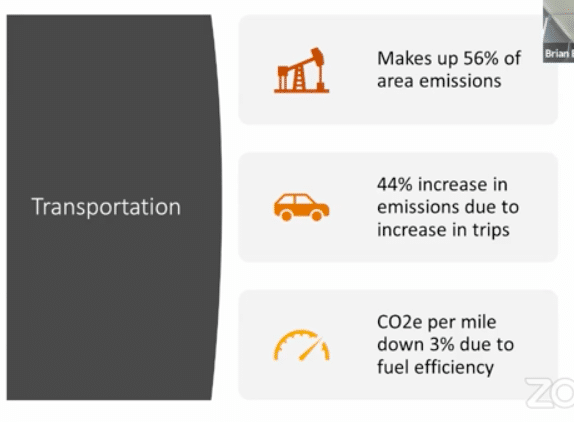This blog post was written by Brady Watson, former Civic Engagement Coordinator for the Southern Alliance for Clean Energy.
On Tuesday, Knoxville Mayor Indya Kincannon’s newly formed Climate Council convened for the first time in what will be a months-long process to develop a plan to help the city meet its goal of reducing carbon emissions by 80% community-wide by 2050. Watch a recording of the meeting at ctvknox.org.
The Climate Council is comprised of a group of leaders from various sectors and communities, including environmental, business, utility, university, neighborhood, student, and faith. Mayor Kincannon is serving as chair of the Council; and City Sustainability Director, Brian Blackmon; and Chief Policy Officer, Erin Gill, will also sit on and support the Council. The other members of the Council are:
Pastor Chris Battle, The Underground Collective/Battlefield Farms
Gabe Bolas, Knoxville Utilities Board
Chris Cimino, University of Tennessee
Brian Hann, Dewhirst Properties
Amy Hathaway, Forest Heights Neighborhood Association
Alicia Hemmings, Sunrise Movement Knoxville Hub
Stan Johnson, Socially Equal Energy Efficient Development
Nancy Nabors, Knoxville Chamber
Cortney Piper, Piper Communications/Tennessee Advanced Energy Business Council
Dr. Stephen Smith, Southern Alliance for Clean Energy
Rebecca Tolene, Tennessee Valley Authority
George Wallace, Coldwell Banker Wallace
Identifying Carrots & Sticks
The Climate Council will first identify and prioritize emissions reductions strategies, then discuss opportunities and challenges for proposed actions, and finally, make recommendations to inform the city’s work plan and long-term vision. Kincannon indicated the Council’s mission would be to answer questions about how best to get the community to hit the target. “What are the carrots? What are the sticks? What requires land-use changes? I don’t know those answers. I’m counting on you,” Kincannon told the members.
In addition to the members of the Climate Council mentioned above, there will also be technical working groups specific to three sectors: transportation, energy, and waste. These subcommittees will be made up of technical experts in their respective fields and will provide recommendations to the broader group. In addition, there will be an Equity Working Group made up of local leaders representing frontline and historically marginalized communities. This group will meet at least 5 times over the next 9 months and will help center equity within the climate planning process. “There are communities that are very vulnerable to climate change,” said Erin Gill, who previously ran the City’s Sustainability Department. “The Equity Working Group will let us know if these strategies have disparate impacts.”

Knoxville Ahead of the Curve for Municipal Emissions…
At Tuesday’s meeting, Knoxville Sustainability Director Brian Blackmon gave the group a breakdown of municipal government emissions from 2019. Almost 50% of emissions from government operations come from City buildings, while transportation, including City vehicles, transit, and employee commutes, makes up the rest. He stated that total emissions for City operation are actually down 31% from a 2005 baseline. In addition to TVA’s power becoming much less carbon-heavy in recent years, a large driver of Knoxville’s emissions reduction is from the city’s LED streetlight conversion project. With a partial year of the new LED lights, annual energy use from streetlights is down 43%. He said the City has projected that number to increase to a 60% reduction in energy used for street lighting with a full year of use in 2020. “We’re ahead of the curve,” Blackmon said. “Small decisions over time have big impacts.” He also indicated that the city currently has 200 kW of renewable energy assets hosted on City property. That is a number that will no doubt need to increase if the City is to meet its goals.
…but Community-Wide Emissions are “not as pretty”
While the City is well on its way to meeting its goal of reducing carbon emissions from government operations by 50% by 2030, the community-wide goal will be more challenging for a number of reasons. “Community emissions are not as pretty right out of the gate,” Blackmon said. First off, the city and county populations are both growing, which has led to an increase in community-wide emissions. While emissions from buildings are down, transportation emissions are actually up.
Knoxville 2019 Community Profile

As you can see from the charts below, transportation makes up over 50% of the community emissions. While cars are becoming more efficient, the Sustainability Director cited an overall increase in trips as a primary driver of this increase. He also mentioned that while vehicles, in general, are becoming more efficient, the average car on the road in Knoxville is more than 10 years old, and thus many of the recent gains in fuel economy of newer vehicles are not being realized. These fuel economy trends are slow to accumulate and may take many years to show up in the form of lowered emissions.

Blackmon went on to break down energy use in the community, stating that electricity consistently makes up roughly 60% of all energy use, with natural gas making up the remainder. Overall, electricity use is up 12%, while natural gas use is down 1% from 2005.
Next, he broke down emissions by sector. In the Knoxville area, emissions from commercial and residential use are actually down, but industrial emissions have gone up substantially since 2015.
Knoxville Carbon Emissions by Sector

National Guidance & Best Practices Serve as Starting Points
The Climate Council clearly faces real challenges to meet the City’s goals, but they will not be starting from scratch. Blackmon and the City Sustainability staff identified the Urban Sustainability Directors Network “High Impact Practices” (HIPs) as a starting point. These practices draw upon leading Climate Action Plans and studies from around the region and use effective emission reduction strategies. These strategies have been established by national and local sustainability experts and practitioners. He stressed that while these HIPs can serve as guidance, they are not blueprints to achieve Knoxville’s specific goals, nor are they a 100% comprehensive list of all possible mitigation strategies. The Climate Council will be tasked with taking these established best practices, and adapting and applying them to Knoxville’s unique circumstances, priorities, and goals.
SACE is excited to be a part of the Climate Council and looking forward to working with other members and the City in order to formulate an equitable and achievable climate action plan. We have pushed for the City to set goals, and now we’re looking forward to helping develop a plan to meet them. We are hopeful that by working collaboratively with stakeholders and engaging the community, we can create a more livable and prosperous Knoxville for all. For more information on the Climate Council, check out the City’s Climate Council webpage. Learn about other climate and energy issues in Knoxville and take action, check out RenewTN.org.
#KnoxvilleClimateCouncil

